Diabetes
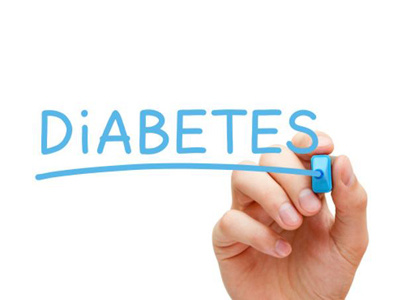
What is diabetes?
Diabetes is the general term of a series of metabolic disorders symptoms, it would lead to decrease of the amount of insulin in the body or inadequate usage of insulin, and further cause high blood sugar. Simply put, there is over high content of sugar in blood, but blood cannot properly use those sugars. Diabetes is a kind of very far-ranging disease, and also is the world's most common metabolic disorder phenomenon. The incidence of middle-aged people aged over 40 is particularly high, up to 10% in some Asian countries, that is, just among ten persons, there is one diabetic patient. Once suffered from diabetes, it will reduce by more than 10 years of life, and possible complications may occur throughout the body。
Diabetes is divided into type 1 diabetes, type 2 diabetes, gestational diabetes, and other special types of diabetes. In diabetic patients, the proportion of type 2 diabetes is about 95%.
What are the causes of diabetes?
Diabetes is actually the metabolic syndrome due to improved living standards, lifestyle changes. In recent years, the number of diabetic patients is increasing rapidly. This is mainly due to the following five risk factors:
1. Genetic factor
Diabetes is a disease related to heredity. If both parents have diabetes, their children would face 50% higher of risk of diabetes than that of others.
2. Excessive obesity
Because obese people need more insulin to cope with the cell 's absorption of sugar, but what a coincidence is that the insulin-conducted glycolytic metabolism capacity of obese people are relatively poor than that of ordinary people.
3. Living factor
Life factors also can lead to diabetes: over-indulgence on sex can lead to impaired function; excessive drinking can damage the liver, work fatigue, mental over-stimulation would result in pancreatic injury and further cause diabetes.
4. Physiologic factor
Physiological factors cause diabetes: patients often work beyond measure at young age, and this causes functional damage or inherent deficiencies and acquired disorders, so that affect the functions of the heart, kidneys, lungs, liver as well as vascular function and lead to the failure of the pancreatic function. Due to lack of insulin secretion, diabetes therefore is caused.
5. Pregnancy
Among 24 to 28 weeks of pregnancy, there will be the phenomenon of high blood sugar and women in such period may face the possibility of suffering from diabetes.
What are the symptoms of diabetic patients?
Polyphagia: patients will often feel abnormal hunger: eat more foods, but still feel hunger.
Polyuria: urine output increases and frequency of urination is increased to 1 time for every 1-2 hours. The higher the blood sugar is, the more the urine glucose will be discharged, and so is the urine.
Polydipsia: due to polyuria , excessive water are lost, the frequency for water intake and drinking will be increased to supplement water.
Weight loss: patients would suffer from weight loss, emaciation; weight can be reduced by tens of kilograms, resulting in fatigue, weakness, lacking of energy.
Eye fatigue, decreased vision: eyes get fatigue easily, vision meets sharp decline; patients would black out when stand up with drooping eyelids, and cannot see things clearly. It is like eyes suddenly changes from hyperopia to myopia or suffer from presbyopia phenomenon that doesn’t exist before.
Paralysis and tremble of the limbs: diabetic patients have intractable paralysis of the limbs, hands trembling, ineffective finger activity and labor pains, severe neuritis of foot pain, back pain and do not want to walk.
What methods can be applied to diagnose diabetes?
Laboratory tests of blood and urine:
(1) Blood glucose monitoring: the frequency and time of checking blood glucose for diabetic patients is determined according to the specific circumstances. During the initial stage of illness, it is suggested to adjust the treatment plan, or change diets and the law of sports, or appropriately increase the number of monitoring.
(2) Determination of urine acetone bodies: if the results show + or + + + +, it means that the urine contains 5 ~ 160mg/dl acetone bodies.
(3) C-peptide determination: by measuring the content of C-peptide in the blood of patients, the function of islet cells can be reflected.
(4) Glycosylated hemoglobin determination: it reflects the condition of the blood glucose of 8 to 12 weeks before draw off blood, and it is recommended to do such determination once every 2 to 3 months.
(5) Blood fat examination (including total cholesterol, triglycerides, LDL cholesterol, etc.): diabetic patients often have dyslipidemia which can easily lead to atherosclerosis and resultin a variety of cardiovascular diseases.
(6) Liver and kidney function: diabetic nephropathy is a common chronic complications of diabetes. Examinations of urinary albumin quantitative, renal function and other tests are helpful for early detection of diabetic nephropathy . Many patients with type 2 diabetes often have symptoms of obesity, dyslipidemia , fatty liver and liver function abnormalities, so liver function and blood fat chemical examination are also required.
(7) Urinary examination: it can reflect severity of kidney involvement. Quantitative determination of albumin in the urine and 24 - hour urine protein, can contribute to early diagnosis of diabetic nephropathy.
Treatment methods of diabetes:
Diet therapy: diet control and exercise would reduce blood sugar to normal level.
Drug therapy: oral medication control blood sugar.
Insulin therapy: when oral medications fail, you can choose the injection of insulin for treatment.
TCM treatment: TCM is a kind of dialectical therapy which combines drugs with dietary as per different types of diabetes, and is helpful for reducing blood sugar and urine sugar, alleviating or eliminating symptoms, or reducing the dosage, and make condition become stable and improved. Modern Cancer Hospital Guangzhou not only has specialists who own multiple years of TCM clinical experience, but also its VIP wards also provide nutritional diets services with regular rounds performed by professional nutritionists and their nutrition consultation and advices.
Special treatment methods of diabetes
Apply stem cells to treat diabetes: stem cells are injected into insulin organizations of diabetic patients to make stem cells divide and differentiate into new pancreatic islet cells, so the insulin organizations shall be reconstructed to restore the function of the secretion of insulin and regain its secretion amount, so as to achieve the effect of the treatment of diabetes. This method has particularly placed high quality requirements on stem cells. Simple separation of the patient’s stems cells, and then transfusing them into patient’s body: this basically won’t impose good results. China Modern Cancer Hospital Guangzhou can adopt special techniques to isolate and culture stem cells and further achieve good therapeutic effects.
Advantages of Stem Cell Therapy for Diabetes Mellitus
1. Safe and Few Side Effects
Stem cell therapy is safe and has few side effects. Before stem cell therapy, the anti-rejection treatment, targeted induction treatment, stability treatment and safety evaluation test will be processed.
Drug therapy can temporally control the condition of diabetes mellitus. However, meditation for a long time will bring harmful side effects to the body, such as renal function impairment, liver damage, etc.
2. Short Course of Treatment----3 Weeks
It only takes three weeks for patients to receive stem cell therapy for diabetes mellitus. After taking stem cell therapy for diabetes mellitus, patients can throw of the suffering caused by diabetes mellitus in a short term. Some patients are forced to inject insulin to sustain life and even worse, some can’t get rid of injecting insulin in their whole life.
Stem cell treatment is effective to 102 patients from total 123 cases of diabetes
Since Apr. 2010, we have treated 123 cases of diabetes by stem cell implantation, among which including type 1 and 2 diabetes. However, there is individual difference on treatment effect through diabetes type, age, physical condition and disease time and so on. Among those 123 diabetes patients, there are 21 patients have stopped insulin, 81 have cut their insulin dose, 12 do not show any change and 9 have to increase insulin dose. To most of them, stem cells play effect 2 weeks after treatment and accompanied by hypoglycemia. The improvement rate on pancreatic islets functions and blood sugar reaches 90-80%, and majority of patients get obvious improvement on pancreatic islets function within half a year without outward reaction.
Effective rate of stem cells to diabetes type 2 is about 85%-95%
We have spent 5 years to statistically analyze the type 2 diabetes patients who have undertaken stem cell treatment in our center and found that, stem cells are effective to 85%-95% patients, 50% patients have cut half down their dose of insulin after treatment and their blood sugar is in a more stable range. Additionally, their risk of acute complications like diabetes mellitus keto-acidosis and hypoglycemia decrease greatly, and at the same time their living quality have tremendously improved. 20% patients have stopped insulin or oral medicine for blood sugar when, the symptoms causing from diabetic retinopathy and diabetic peripheral nervous affection, such as blurring vision, limb numbness and coolness, and prickling have relieved effectively, which really achieve good treatment effect.
-
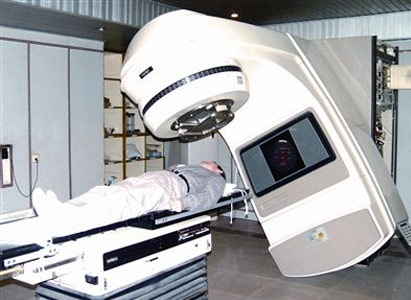 Radiation Therapy...
Radiation Therapy...
Radiation therapy or radiotherapy is a therapy using ionizing radiation, generally as part of cancer treatment to control or kill malignant cells, which can be divided into systemic...more>>
-
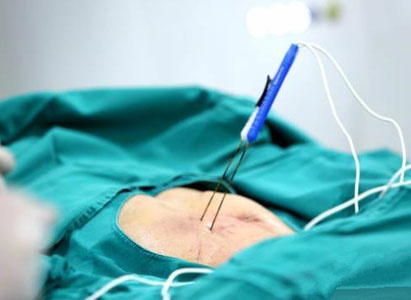 Introduction of Nanoknife Techn...
Introduction of Nanoknife Techn...
Nanoknife is a brand-new cutting-edge ablation technology for tumor treatment. It breaks the membrane of tumor cells with high voltage pulses from electrode probes, resulting in mul...more>>
-
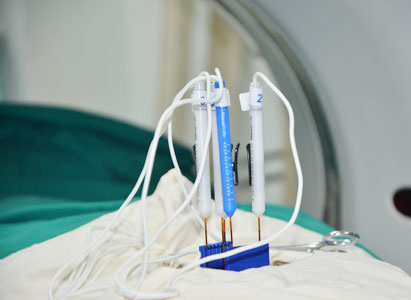 Successful case of nanoknife ab...
Successful case of nanoknife ab...
Modern Cancer Hospital Guangzhou successfully completed a case of nanoknife which was performed under CT guide and general anesthesia to ablate pancreatic cancer....more>>
-
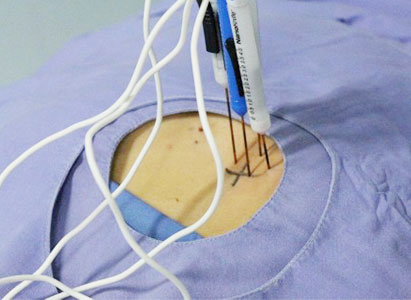 Nanoknife:safety and quick re...
Nanoknife:safety and quick re...
Nanoknife is the latest, most advanced cancer treatment. Nanoknife is suitable for pancreatic cancer treatment, which can raise the survival rate to more than 2 times for them....more>>
-
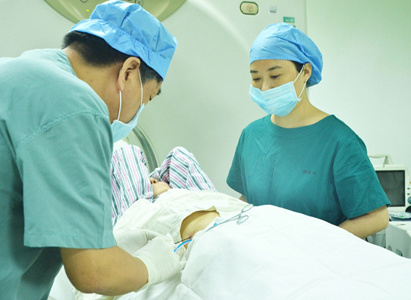 The Latest Direction of Tumor T...
The Latest Direction of Tumor T...
Microwave ablation (MWA) is a form of minimally invasive physical therapy with the highest inactivation rate at present. It is used in interventional radiology to treat cancer in Mo...more>>
-
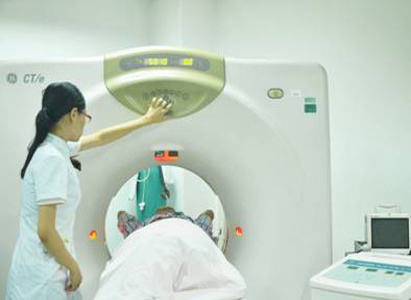 Microwave Ablation (MWA): Opene...
Microwave Ablation (MWA): Opene...
Microwave ablation (MWA) is a form of minimally invasive physical therapy with the highest inactivation rate at present. It is used in interventional radiology to treat cancer in Mo...more>>
-
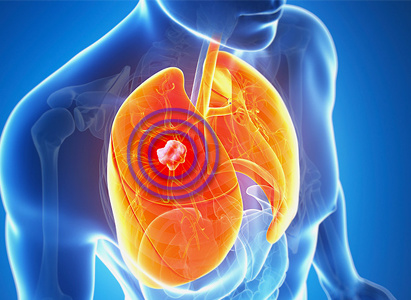 Cryotherapy and Lung Cancer...
Cryotherapy and Lung Cancer...
Currently, the traditional treatments available for lung cancer are surgery, chemotherapy and radiotherapy. However, with the advancement in the medical technologies, minimally inva...more>>
-
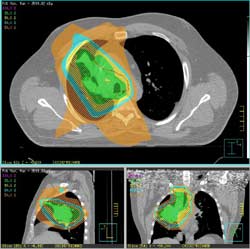 Photon Knife/3D Conformal Radia...
Photon Knife/3D Conformal Radia...
Photon Knife uses the targeting information to focus precisely on the tumor, while avoiding the healthy surrounding tissue. This exact targeting are more effective in shrinking and ...more>>
-
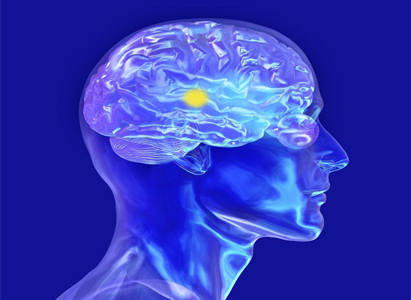 New combination therapy for bra...
New combination therapy for bra...
The new method developed by Modern Cancer Hospital Guangzhou to treat brain tumor: photon knife + targeted therapy, if combined with traditional Chinese medicine immunity, can effec...more>>
-
 Interventional Therapy:Starves ...
Interventional Therapy:Starves ...
What is interventional therapy? Interventional therapy is a mini-invasive therapy that under the guidance of medical image equipment. It mainly has two categories: vascular interven...more>>
-
 Green Chemotherapy...
Green Chemotherapy...
MCHG modified conventional chemotherapy with means, minimizing its side effects while maximizing the efficacy. With the advantages of reduce side effects greatly, those chemotherapi...more>>
-
 Natural Therapy...
Natural Therapy...
natural therapy, which is one of the green cancer comprehensive therapies, can reduce the side effects of radiotherapy and chemotherapy and kill cancer cells and virus....more>>
Q&A Portion
- Question:Doc, I want to ask particle implantation, I was diagnosed breast cancer last year.
- Answer:Particle implantation is to implant the radioactive particles inside the tumor by percutaneous puncture. The radiation releases from the particle can constantly kill the tumor cells without hurting other organs or tissues around tumor. Actually it is an internal radiotherapy with less side effects and small complications. That is depending on individual condition. We need to study your case first then we can know if this treatment is the best for you. You can send us your medical reports, records, imaging materials like CT scans, MRI etc. for our specialist team study first. Then we would offer you the treatment plan accordingly.




